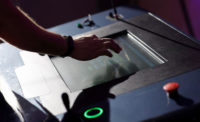What is the Future of Packaging Automation?

The latest Industry 4.0 technologies allow producers to move a step further in digitalizing their production and making customers feel more connected.
Image courtesy of EU Automation
Packaging is of utmost importance in today’s commercial world, leading manufacturers to find the best solutions to respond to customers’ needs. The latest Industry 4.0 technologies allow producers to move a step further in digitalizing their production and making customers feel more connected. Here, Neil Bellinger, head of EMEA at automation parts supplier EU Automation, discusses three main innovations in packaging automation that will help manufacturers stay competitive and optimize their production.
In recent years, Industry 4.0 has developed at a surprising rate and is predicted to reach $1 trillion by early 2030, according to 4.0 Research. This technological advancement is the perfect opportunity for manufacturers in the packaging industry to speed up their digitalization strategy and respond to customers’ requirements in an efficient way.
Robot Palletizing
Palletising, which requires lifting heavy weights repetitively and is exhausting for human workers, can become more efficient using automation technologies. For example, collaborative robot arms can be easily programmed and redeployed depending on their tasks and can optimize the workflow, especially during peak seasons. They are also cost-efficient, ensuring a fast ROI and requiring no additional costs for programming and dedicated work cells. This also means that manufacturers can implement multiple cobot arms alongside the palletizing process to speed up their production and load multiple products.
Collaborative robot arms can be used for packaging applications in all major industries, from pharmaceutical to electronics or metalworking and they are also suitable for food and beverage. They can also manipulate delicate products — for example, Universal Robots’ UR10 can palletize small and fragile products such as eggs, though it has a payload of up to ten kilograms. The robot’s compact design, weighing 28.9 kilograms with a small footprint of 190 millimetres ensures a flexible packaging in industries where reliability and precision are paramount.
Smart Packaging
In the 2019 Clean Label report, the world’s leading nutrition company Kerry Group found out that customers are increasingly questioning label claims, with 49% t of those surveyed believing that there is not enough information on packaging to help them make informed decisions about their lifestyle.
In a supermarket, few customers would take the time to read labels carefully. Moreover, labels are sometimes torn or erased, or simply incomplete. Smart packaging allows shoppers to engage deeper with their products using their own devices. This is where the IoT comes into play.
Smart products are assigned IDs that can help customers in different ways. For example, they can check whether the products have been stored at the right temperature using Near Field Communication (NFC) tags equipped with temperature sensors. NFC tags are passive devices that operate without a power supply of their own and depend on an active device to come into range before they are activated. This means the customers can simply tap their NFC-enabled phones to the package and gather useful information.
Whiskey company Johnny Walker is currently using NFC technology that allows customers to check whether the bottles have been tampered with and whether they are sealed properly.
Similarly, customers can get ‘best before’ warnings, real-time offers, or they can track the journey of their products across the entire supply chain using the data stored digitally.
Flexible Motion Control
Packaging does not only have to be interactive, it also has to keep up with customers’ requirements and tastes. The emphasis is no longer on mass production, but on mass customization instead. For example, bottled water used to come as a single unit, but it can now be found in packs of six, twelve, or even twenty bottles. Manufacturers may produce batches of six-packs one day and twelve the other day. This means that packaging equipment needs to be programmed to switch quickly and often.
Motion control systems are designed to handle quick changeovers and add additional functions that provide a more flexible process. One of the strategies to achieve this is flexible programming, which means the ability to use different codes on the same controller. Smart machines can create setpoints that allow a single machine to run product one at a programmed speed and set features and run product two with different characteristics using distinct tools.
Yaskawa developed the Singular Control architecture that can control a mix of motion equipment, including six-axis articulated robots This brings increased flexibility in packaging and reduces programming, which in turn makes switching operations faster.
From increasing speed to making customers feel more in control of their choices, automation technology is constantly evolving in line with packaging trends. To make sure they respond to their customers’ needs, manufacturers need to keep up with innovative technology and digitalization trends.
At EU Automation, we help packaging companies stay competitive and enhance their production by supplying automation parts from all major manufacturers in the shortest time, to ensure they keep downtime to a minimum.
Looking for a reprint of this article?
From high-res PDFs to custom plaques, order your copy today!






